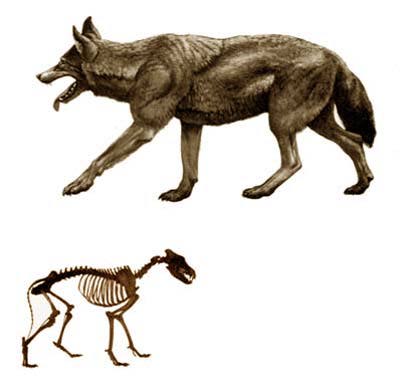
Dire Wolf (Canis dirus)

Status: extinct
This species of wolf is closely related to the gray wolf, but had many different physical characteristics. The Dire wolf was about 5 feet in length, and weighed about 100 pounds. It had a larger, broader head with much larger teeth but a smaller braincase than a similar sized gray wolf. With the larger head and teeth (and extensive wear found upon the crowns of the teeth in specimens), many believe the Dire wolf to have had the ability to crush bone more effectively than the gray wolf.
There were more than 3,600 specimens retrieved from La Brea (the most common mammals recovered). The large numbers of Dire wolves found together in close proximity to one another within the tar pits suggest that they hunted in packs. When a pack was feeding upon a kill in the tar pits, many became trapped at once and died together.
The Dire wolf remains show similar injuries to those found on modern timber wolf and gray wolf. Hunting injuries acquired while chasing moose or deer, the timer and gray wolves are often kicked or trampled. The Dire wolf is speculated to have received the same type of injuries from the Western horse, Ancient bison or Long-horn bison.